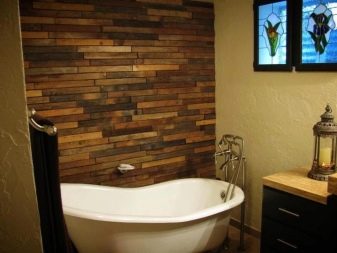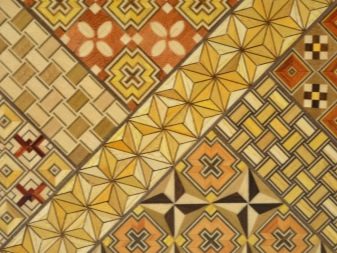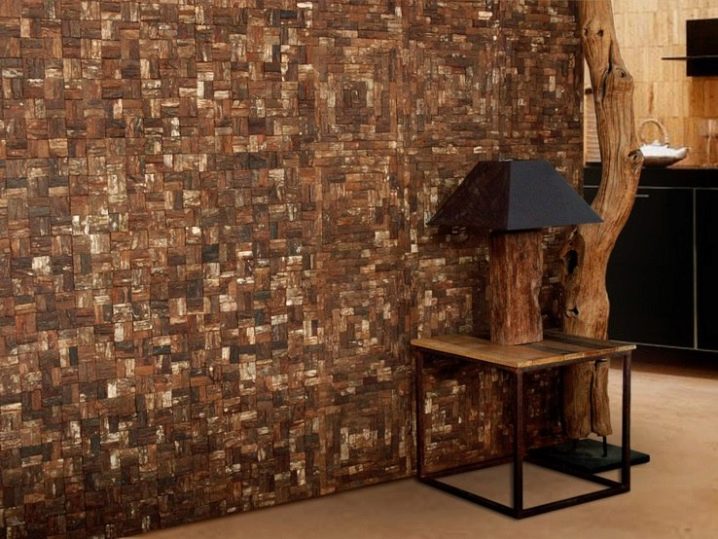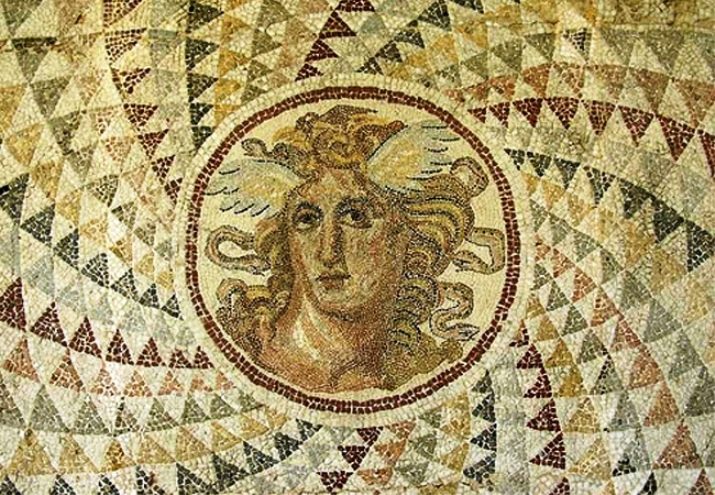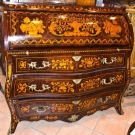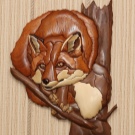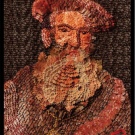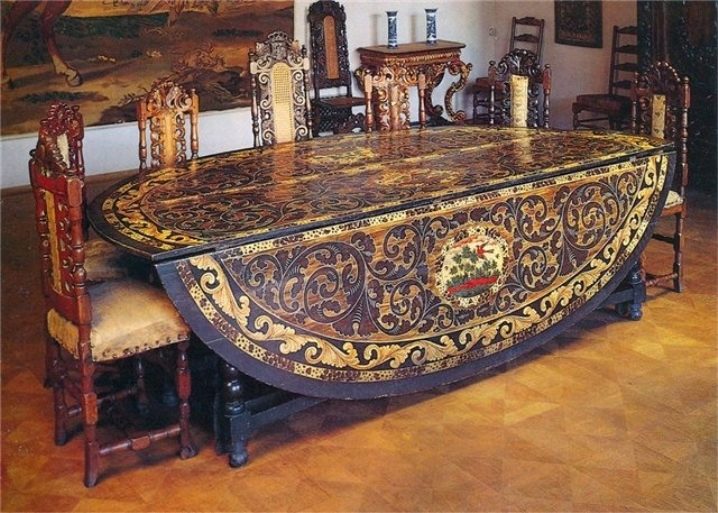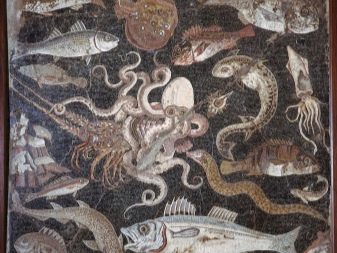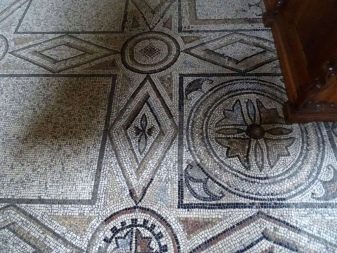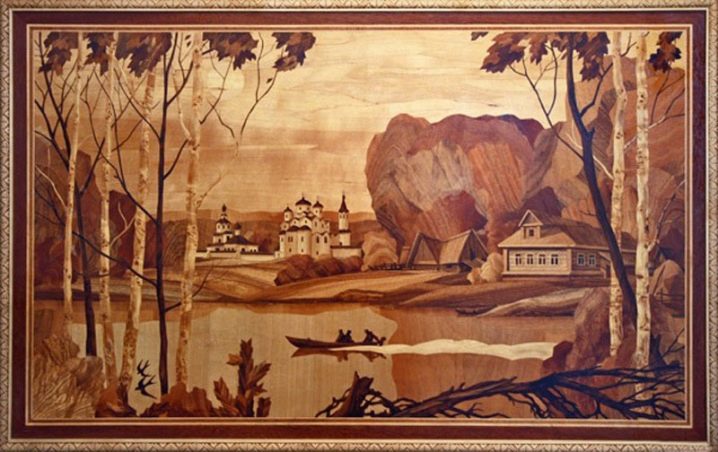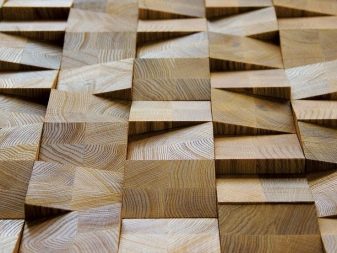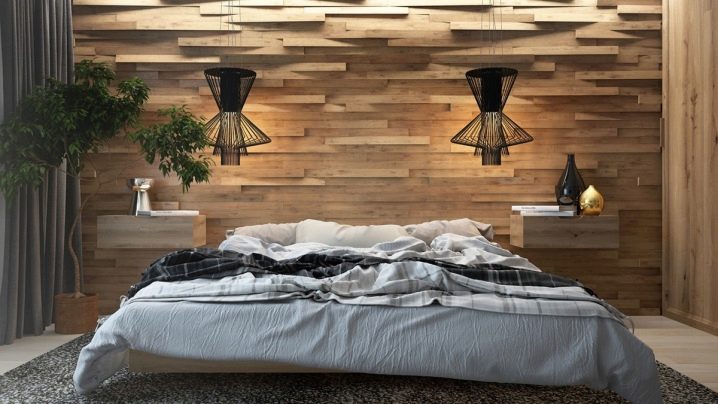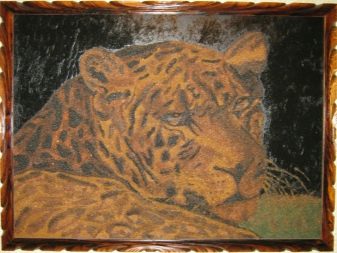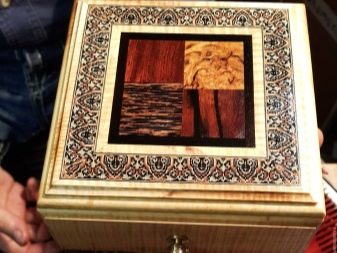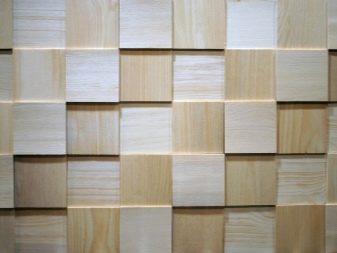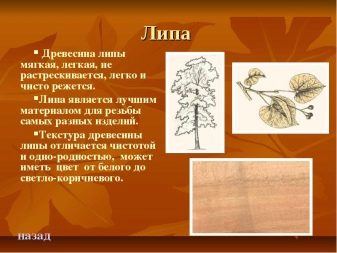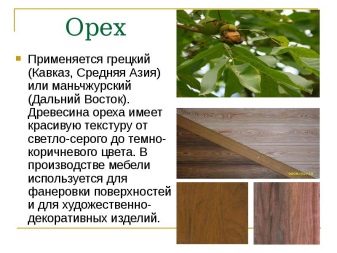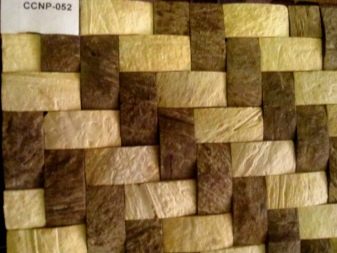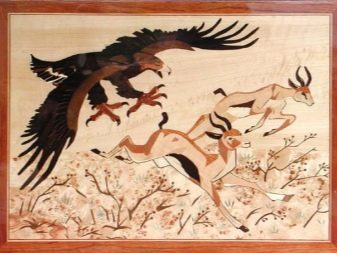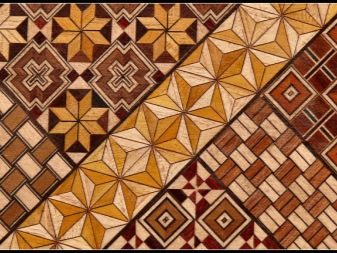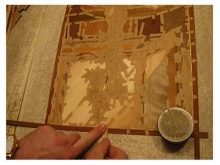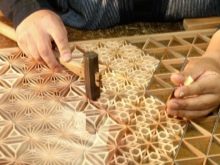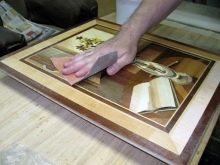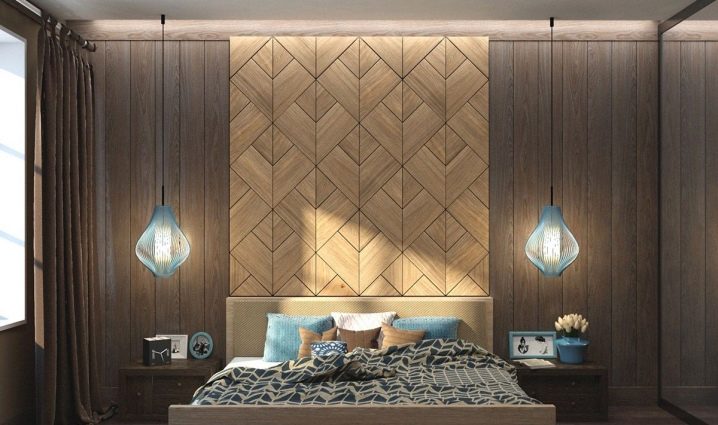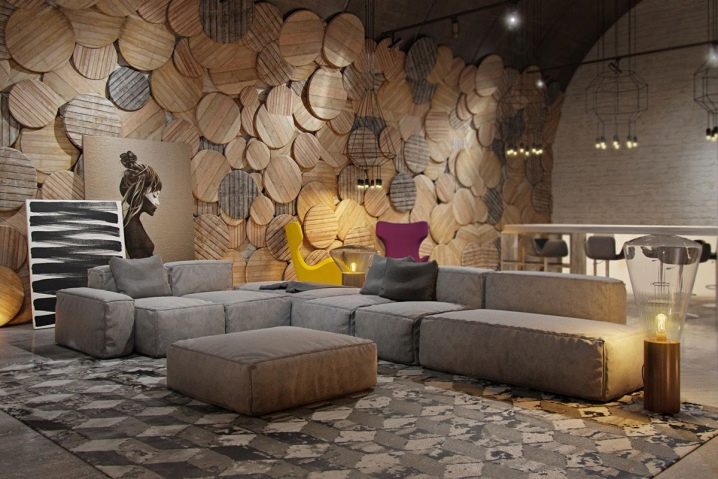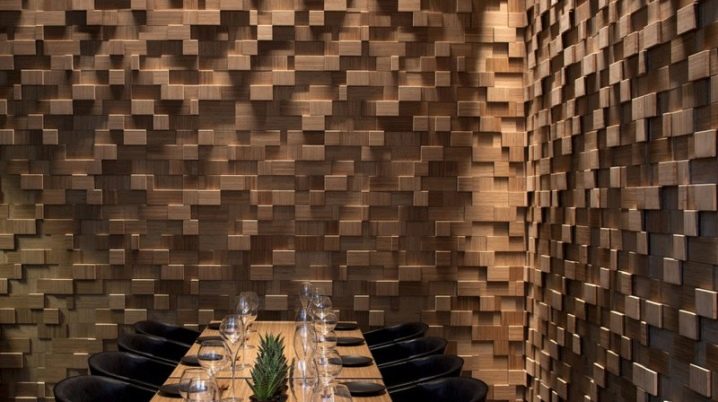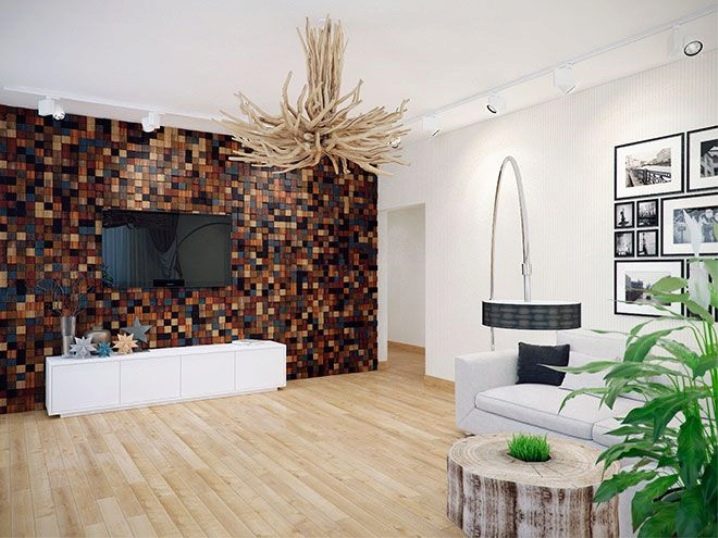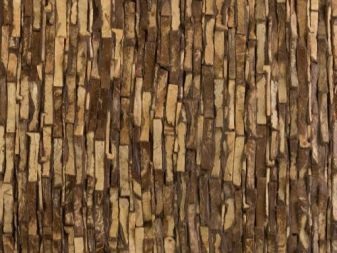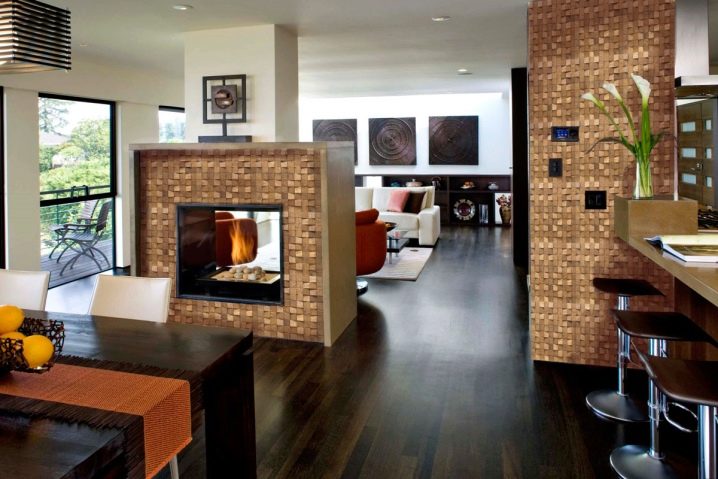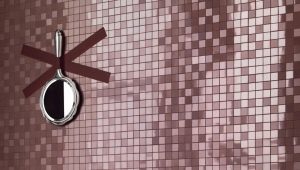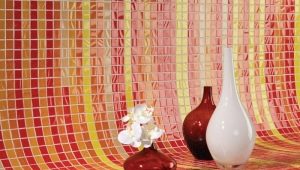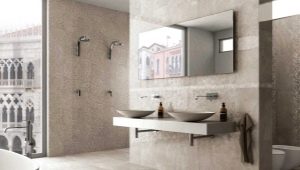Wooden mosaic: properties and applications in the interior
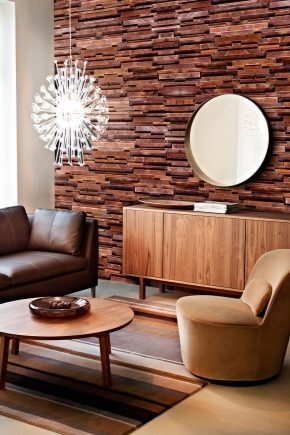
At all times, the tree has been quite popular. In this regard, the construction market presents a huge variety of this material, not only natural, but also of artificial origin. But no matter how a modern manufacturer tries to give artificial products the structure and colors of natural wood, this often fails. This kind of material only from afar resembles wood and cannot possess its natural properties. The real originality of the interior of any home will be provided by natural wood mosaic for the wall plane.
Special features
Wooden mosaic is a truly luxurious decor for decorating walls or flooring.It looks similar to the plates of different sizes, which are cut from natural wood. If you are tired of wallpaper, panels and ceramic tiles, then this type of finish as a wood mosaic cladding will obviously interest you. Wood mosaic has just started to win its place in the market and sometimes it looks very unusual, but very impressive. In addition, it is an environmentally friendly product, which is safe and as comfortable as possible to use in everyday life.
Mosaic of wood for facing rooms has a number of positive features:
- ease of use in rooms with walls on which there are bumps;
- long service life with proper use of the material;
- not afraid of high humidity and other harmful effects;
- This mosaic can be combined with all known styles and materials, it goes well with glass, metal, ceramic inserts;
- uniqueness - a real mosaic is made by hand, so its drawings will look exclusive;
- sound insulation and heat preservation properties;
- if in the process of using cracks or scratches appear on the coatings, they can be easily hidden.
Kinds
Mosaic is one of the varieties of pictorial art, where the display of the plot or ornament is made of the same type, very tightly fitted to each other, particles of different colors (stones and glass, ceramics and wood can act as pieces of the mosaic).
Inlaying, intarsia, marquetry technique, block mosaic are considered to be the most frequently encountered mosaic techniques for wood, characterized by a huge selection of color and design solutions.
Inlay
This is a stylish decoration of products or any surfaces cut into the surface of their designs or ornament of special plates. Such plates are made of expensive materials (for example, mother of pearl or ivory). There are 2 main methods of modern inlays.
The first one is used to insert large parameters and not the most complex configuration. The necessary insert is prepared, a place is selected in which it will be nested, and then its shape is reflected by the contour with a sharp object on the base.
The second method is chosen when performing a complicated ornament with an openwork image.On the surface to be decorated, you need to put an insert pattern, and make a not very deep cut along the existing contour. After this tool is chosen notch with a slightly beveled edge. If the inserts coincide with the notches, the master adjusts them on the back side. For the best fastening with the base will be made notch. Inserts are strengthened in specially prepared grooves with an adhesive substance, followed by trimming the resulting pattern.
Also known is the method of imitation inlay using multi-colored pastes: they need to fill the existing grooves in the tree. These pastes are made from multi-colored pigments that are mixed with a glue base. They can imitate ivory or mahogany, malachite or turquoise.
Intarsia
This type of wood mosaic is similar to inlay: wooden plates are inserted into the recesses of the base of the wood, which differ from the base in color or texture. The decorative pattern is reinforced on the base with glue or mastic. The front side of the plates of this set can be made of cypress, yew, boxwood and other resistant species.It is gently smoothed and polished with high quality.
In addition, different methods are used to change the natural color of the inserts, due to their impregnation with oil or boiling in a special paint.
Block mosaic
It is considered one of the most common types of mosaic in wood, which differs from other techniques by the least labor-intensive, which can be explained by its extensive use in our time. The technique of this mosaic is that, according to the existing pattern, blocks will be glued together from different bars or plates. Then these blocks are cut across a large number of plates with the same type of pattern. Plates can be inserted into the background recess or pasted onto the surface: this is how the original pattern is formed - mosaic tile.
The block is usually glued with bars with a length of 20 cm and a section of 2x2 cm made of exotic wood. The mosaic pattern will be created by the end surface of those bars that are included in the block. After gluing, the block will be cut parallel to the end surface into thinner plates that can be inserted into the recesses of the base or glued to the base.This forms a repetitive image on the surface. After these manipulations, the resulting surface is thoroughly polished and covered with a transparent varnish. According to the mosaic drawing, which is being developed by the decorator, the required number of blocks with different end surface patterns will be made. From these records, a “mosaic panel” will be collected later.
Marquetry
This is another type of mosaic on wood, in which the mosaic is made of pieces of veneer from different wood types in color and texture. The pieces of the mosaic cut into the veneer, which is the background. Together with the background, the base is glued to the surface to be drawn. In order for the mosaic to look like a geometrically correct pattern (composed of the usual shapes: squares or rhombuses), it must be created by gluing the components along the edges (or by gluing them onto previously prepared paper as closely as possible to each other). This kind of set is known under the name "parquetry".
If the background is completely absent or small in area, and the image fills the entire surface, then the mosaic elements are alternately glued or cut into a sheet of paper (along the contour of the mosaic image applied on it). So, all paper will be gradually replaced by small pieces of veneer.In the technique of marquetry, you can make both the simplest ornaments for various wood products, and the most complex compositions for the decoration of the rich interiors of solid residential buildings.
More information about the technique of marquetry - in the next video.
Wood species
The material for creating a mosaic can be either solid wood of various species (including exotic ones) or waste in the form of chips: it is mixed with cement and water. Thus, the composition is given the desired shape, thickness and even density. This is the case when an inexpensive finishing material, neither in safety nor in appearance, will yield to expensive materials.
The color scheme of cement-bonded mosaic elements is gray-yellow-orange. The pattern folds perfectly, is attached to the surface elementary - with the help of glue. It looks unusual. Possesses natural naturalness both in form and in content.
In addition to the low price has a whole list of positive qualities:
- strength;
- moisture resistance;
- difficult ignition;
- soundproofing;
- picky when leaving.
Pine trees and linden, loved by philistines, do not apply to the technology of wood mosaic production.It requires the most solid varieties of wood, namely - cedar, oak, ash. Sometimes alder is chosen.
- Pine. It does not have the highest price. It has a pronounced pattern in the form of circles.
- Linden. Apply only sawn young trees, as a tree over 10 years old can begin to collapse.
- Aspen. It has a soft structure, easy to process. It has an original yellow tint.
- Nut. The cut can have various shades: from the darkest to the lightest. Fits perfectly into the interior of any home. Panel of the cut of the nut can be produced from both hard and soft breeds. The material will be treated with an antiseptic, which will protect the saw cut from rotting and the impact of bugs.
Also used mosaic of bamboo and coconut shell. When choosing a particular type of wood to create a mosaic, you need to take into account not only its natural, decorative or artistic properties, but also its mechanical qualities. Important may be the tendency of different breeds to rapid shrinkage or slow swelling when changing the level of humidity. They can predetermine both the laboriousness of processing a certain type of rock, and the length of the product life cycle.
Often when finishing works, wood species are used with a special density and hardness of trunks, which differ in different colors.
Sometimes it is even necessary to specifically change the natural color of the tree by firing, as well as dyeing, bleaching, staining. In this case, in the production process of mosaic you can get a decorative coating with an original ornament or a clear plot, which will have a high decorative value.
In addition to these rocks, in the mosaic you can also find such rocks as:
- amaranth - with its unusual reddish-purple color and a pronounced woody structure;
- lemon with golden tones;
- Anatolian walnut - with a striking striped texture;
- rosewood - with a yellowish brown or purple subtone;
- ebony - with black color;
- holly - with wood of reddish tones.
Production technology
To work in the above techniques, you must have well-honed professional skills. But if you want to create an ordinary wooden mosaic tiles, then for this, no special knowledge is needed. It is enough to follow simple instructions.
- First, the parameters are calculated: the dimensions of the whole fragment are specified, and then the resulting size is divided into smaller fragments, which must be done. Then the details loom on wood.
- Cutting fragments. In the presence of a special saw, the production of blanks of the required size will not be difficult.
- When blanks will be cut, it remains only to form the edge, which is done using a conventional router. A variety of edges can be made any, today produce a lot of cutters of different styles.
- After these tiles are ready, they need to be treated with antiseptic - this will be a protection from the effects of various pests and prolong the life of the mosaic. After careful processing, the wood dries well and is sanded, the product has a perfectly flat surface.
- Grinding It is carried out with a special machine with the help of skins of different grain sizes - first the largest abrasive is used, and then the smaller one.
Beautiful examples in the interior
- Wooden mosaic in the room - This is the most harmonious combination of old history and urban modernity.Wood is one of the most popular materials when facing houses and apartments these days. A significant disadvantage is its rather high cost, but it will also pay off with a long service life of the product.
- Wooden mosaic fit for zoning a room, it can be used as an accent when designing the interior in the chosen style.
- Wooden mosaic can be represented not only in the form of small squares, it also may be rectangular or curved.
- Good mosaic looks in spacious rooms, when she make out a huge canvas. In this case, you can consider the texture of wood, see the play of colors. Such a finish on the wall looks expensive.
- The compositions, including light and dark elements, a variety of textures.
- You can use wood tiles on the table, steps and on other home furnishings.
- With the help of a mosaic of wood, impregnated with a special refractory substance, you can focus on the fireplace in the living room. Relief texture will give the interior spectacularity and brightness.
